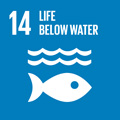- Docente: Luca Fontanesi
- Credits: 6
- SSD: BIO/18
- Language: English
- Moduli: Luca Fontanesi (Modulo 1) Samuele Bovo (Modulo 2)
- Teaching Mode: In-person learning (entirely or partially) (Modulo 1); In-person learning (entirely or partially) (Modulo 2)
- Campus: Bologna
- Corso: Second cycle degree programme (LM) in Bioinformatics (cod. 6767)
-
from Nov 03, 2025 to Dec 03, 2025
-
from Dec 10, 2025 to Jan 23, 2026
Learning outcomes
At the end of the course the student has knowledge of the main experimental designs and tools applied in genetics and genomics and approaches for genetic and genomic data analysis, with an emphasis on vertebrate genomes including genetic mapping, QTL, eQTL analysis, and next generation sequencing. In particular the student is able to: understand the structure of genetic variability and its phenotypic effects, browse vertebrate genomes, apply methods to identify disease genes and QTL, use software for genomic data analysis, correctly interpret results and plan genetic studies in a proper way.
Course contents
SPECIFIC PREREQUISITES FOR THIS COURSE
To better understand the topics covered in this course, students are advised to have already acquired knowledge in the following areas: genetics, statistics and molecular biology. Students with gaps in these fields are strongly encouraged to contact the professors at the beginning of the course. Together, the students and the professor will prepare a specific plans to fill any gaps.
SPECIFIC CONTENTS OF THIS COURSE
The syllabus is structured in 16 theoretical and practical lectures:
1) Introduction to the course - Foundational concepts in genetics (including population and quantitative genetics) and genomics. Basic technologies and approaches in genomics (Fontanesi)
2) Next generation sequencing (NGS) technologies I (Fontanesi)
3) Next generation sequencing (NGS) technologies II (Fontanesi)
4) Primer of NGS data analysis (Bovo/Schiavo)
5) How to sequence a complex genome – genome assembly (Bovo)
6) Genome databases, annotation and features of a complex genome (Bovo)
7) Genome variability: applications and analysis of case studies (Bovo)
8) Next generation sequencing data analysis – case studies (Bovo)
9) Developing high throughput genotyping tools – use of these tools (Fontanesi)
10) Planning a genomic project (Fontanesi)
11) Elements of population genomics (linkage disequilibrium, linkage analysis, ROH, etc.) (Fontanesi/Bovo)
12) Genome wide association studies - GWAS (Bovo)
13) Use of software for population genomic analysis and GWAS I (Bovo)
14) Use of software for population genomic analysis and GWAS II (Bovo)
15) Examples of genomic projects (Fontanesi)
16) How to prepare a genomic project (Fontanesi)
Readings/Bibliography
Students are strongly advised to take notes from the lectures which should be integrated with lecture slides, and indicated books/chapters. Tools and software will be provided during the course.
Books and other materials:
1) Genomes 4. T.A. Brown. Tailor & Francis (2018)
2) Bioinformatics and Functional Genomics - Third Edition, Jonathan Pevsner (Wiley Blackwell), (2015)
3) Molecular and Quantitative Animal Genetics - Hasan Khatib,
Wiley (2014)
4) Genome wide association studies and genomic prediction. C. Gondro, J. van der Werf, B. Hayes. Human Press (2013).
5) Scientific articles, references and software are provided to the students during the course.
6) Lecture slides are given to the students.
7) Some good projects of the previous years will be shared with the students.
Teaching methods
Lectures. Exercises during the course for specific aspects. Analysis of scientific papers during the lectures. Each student plans a genomic project.
Guideline on how to plan the genomic project:
1) A virtual budget will be assigned (randomly)
2) The student, based on the program of the course, will develop her/his idea of a project that should answer a question related to the current state of the art of a defined field of applied genomics – selected by the student
3) The considered species should have a complex genome (therefore no prokaryotes or viruses are usually accepted)
4) The student should use the virtual money assigned by virtual spending the budget on genomic analyses and on the planning of the project design and implementation
5) The assigned budget should cover: cost of sampling biological materials/specimens in the field or in other contexts, DNA extraction, NGS and/or high throghput genotyping in outsourcing, computational costs could be eventually included, etc. (no instruments should be bought)
6) The aim of the project should be balanced according to the available budget
7) The project expected results should be reliable according to the study design
8) A budget balance should be provided to demonstrate that all virtually available money is spent (virtually)
9) Examples will be discussed during the lectures (based on case studies) Plans of genomic projects will be detailed discussed during the lectures
Assessment methods
The final exam valuates the students according to the following objectives:
1) knowledge of the foundational concepts in genetics and genomics;
2) knowledge of advanced technologies for genome analysis;
3) knowledge of advanced applications of genomic tools to answer biological questions in vertebrates;
4) capacity planning of genomic experiments.
The final exam has three levels:
1) Written exam: A written test will be submitted to the students based on 30 questions - 25 questions have close answers (based on choice between multiples options), 5 questions need a short written answer. Student can pass the written text if at least 22 out of 30 answers are correct and if on the same day they send to the professor the genomic project (please see below). Students that pass the written test will have to defend a genomic project within one week from the written test (or the same day of the written test)
2) Preparation of a genomic project: a text should be written including an appropriate introduction to the problem/question that the experiment or project would like to analyse or answer, aim of the project, a section with materials and methods, expected results and impact. The project should be sent to the professors at least a wee before the written test. Students that do not submit the genomic project on time will not admitted to the written test. A check will be carried out to verify whether the project was written with the aid of artificial intelligence tools (if the contribution of artificial intelligence is evident, the student will not be able to take the oral exam and will have to resubmit the reformulated project only after two subsequent exam sessions.
3) Oral exam - Interview based on the project submitted and other two questions according to the main objective of the course. Only students that are positively evaluated at the written test are admitted to the interview.
The final score will be based on the performance of the students at the written test (including the submitted project; 50% of the final score) and at the interview (50% of the final score).
Students with learning disorders and\or temporary or permanent disabilities: please, contact the office responsible (https://site.unibo.it/studenti-con-disabilita-e-dsa/en/for-students) as soon as possible so that they can propose acceptable adjustments. The request for adaptation must be submitted in advance (15 days before the exam date) to the lecturer, who will assess the appropriateness of the adjustments, taking into account the teaching objectives.
Teaching tools
Lecture slides are given to the students during or before the specific lectures. Students should complete slides with their own notes. Scientific articles, references and software are provided to the students during the course.
Office hours
See the website of Luca Fontanesi
See the website of Samuele Bovo
SDGs




This teaching activity contributes to the achievement of the Sustainable Development Goals of the UN 2030 Agenda.
